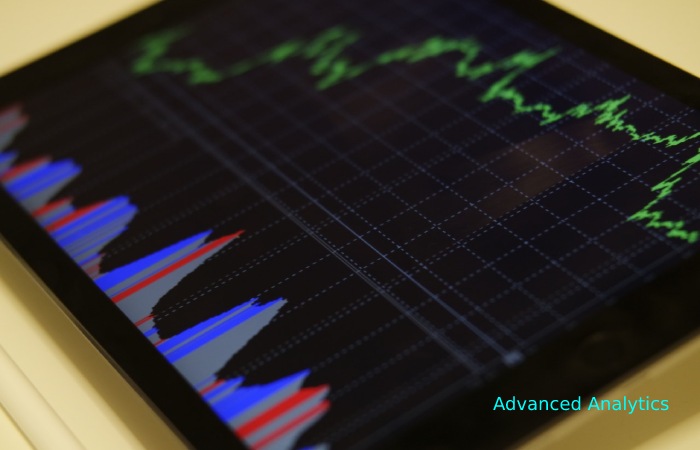Advanced analytics is a complete customary of analytical techniques and methods. Big Data, Artificial Intelligence, Machine Learning, Continuous Intelligence. It allows better predictive analysis and provides information on the change, giving a broader vision that enables organizations to develop better responses and act on more accurate forecasts and plans.
Table of Contents
Advanced Analytics Important

It is a valuable resource for businesses because it allows a company to get more functionality out of its data, regardless of where it is stored or in what format. Advanced analytics can also help solve some of the more complex business problems that traditional BI reports can’t.
For Example, To Create A Related Marketing Engine;
- When is a customer likely to run out of an item?
- What time of day or week are you most receptive to marketing promotions?
- What level of profitability can be achieved in marketing right now?
- At what price are they most likely to buy?
By combining consumption models with historical data and artificial intelligence (AI), advanced analytics can help businesses find accurate answers to these questions.
Differences between Business Intelligence and Advanced Analytics
Advanced Analytics answers multiple questions and contains multiple business intelligence components.
Advantages Of Advanced Analytics
- Advanced analytics not only enables more critical use of data and gives decision-makers greater confidence in the accuracy of the data, but it also offers the following benefits:
- Accurate prediction. Using advanced analytics can confirm or refute forecasting and predictive models more accurately than traditional BI tools, which still have an element of uncertainty.
- Faster decision making. With highly accurate predictions, executives can act faster, confident that their business decisions will produce the results they want and that beneficial effects are repeating.
- Deeper vision. advanced analytics provide more profound actionable insights from data, including customer preferences, market trends, and It also critical business processes, enabling stakeholders to make data-driven decisions directly impacting their business.
- It improved Risk Management. The increased accuracy provided by advanced analytic predictions can help organizations reduce the risk of costly errors.
- Anticipate problems and opportunities. Advanced Analytics uses statistical models to uncover potential issues in current business or identify new opportunities so stakeholders can quickly change course and drive better results.
Advanced-Data Analytics
Descriptive Analytics
This type of advanced data analytics emerged to help answer the question, what has happened in the business? It is a preliminary stage of data processing. In this stage, a summary of the historical data provides helpful information and prepares the data for further analysis. Finally, a graphic display or BI layer is a form that generates visible and easily understandable reports.
Diagnostic Analytics
This type of advanced data analytics emerged to help answer the question, Why has this happened in business? It is the second stage of data analytics. In phase, after finding anomaly, failure, and expected data, the data is processed to locate the root of the problem. Finally, the situation has to pinpoint. Then, a report generates that only details the problem and how to solve it or apply the following two analysis phases. If we use predictive analytics, we will be able to see how this point affects the business in the future, and if we apply prescriptive analytics, we will be able to see how to act.
Predictive Analytics
This type of advanced data analytics emerged to help answer the question What will happen to the business? This third phase of data provides tools to estimate business data that is unknown or uncertain or that requires a manual or costly process to detect. This type of analytics allows you to strengthen business decisions and, for example, will enable you to anticipate customer demands or detect fraud in electronic payments.
Prescriptive Analytics
This type of advanced data analytics emerged to help answer the question, How can we make the scene happen? For this, prescriptive analytics. This type of analytics also helps fulfil the procedure to follow to achieve an objective. It is complete through process optimization and business rules.
Benefits Of Advanced Data Analysis
- Stock reductions reduce warehouse assets and allow optimal management of these.
- We obtain information never before taken into account in companies, providing more excellent business knowledge and therefore providing management with better global visibility.
- Development of tools that control the quality of the data, thus increasing the company’s intangible value. With better data, better conclusions are straight, and the actions to be carried out are more precise.
Mainly:
- Improve our decision-making by using the data more concretely.
- Automate processes, saving us valued time in recurring tasks and minimizing costs.
- Achieve greater efficiency by concentrating on processes of greater importance to our business.
In addition, It is essential in the digital transformation of many companies because, thanks to the exhaustive analysis of data, we will be able to base the decisions we make on real-time information and not on assumptions, instinct or points of view.

